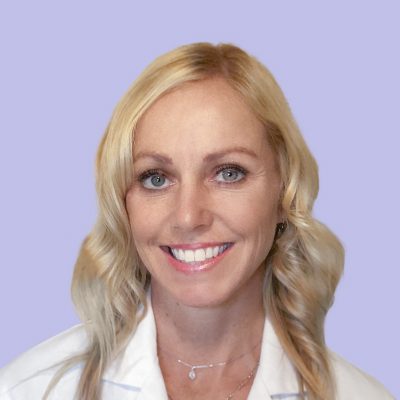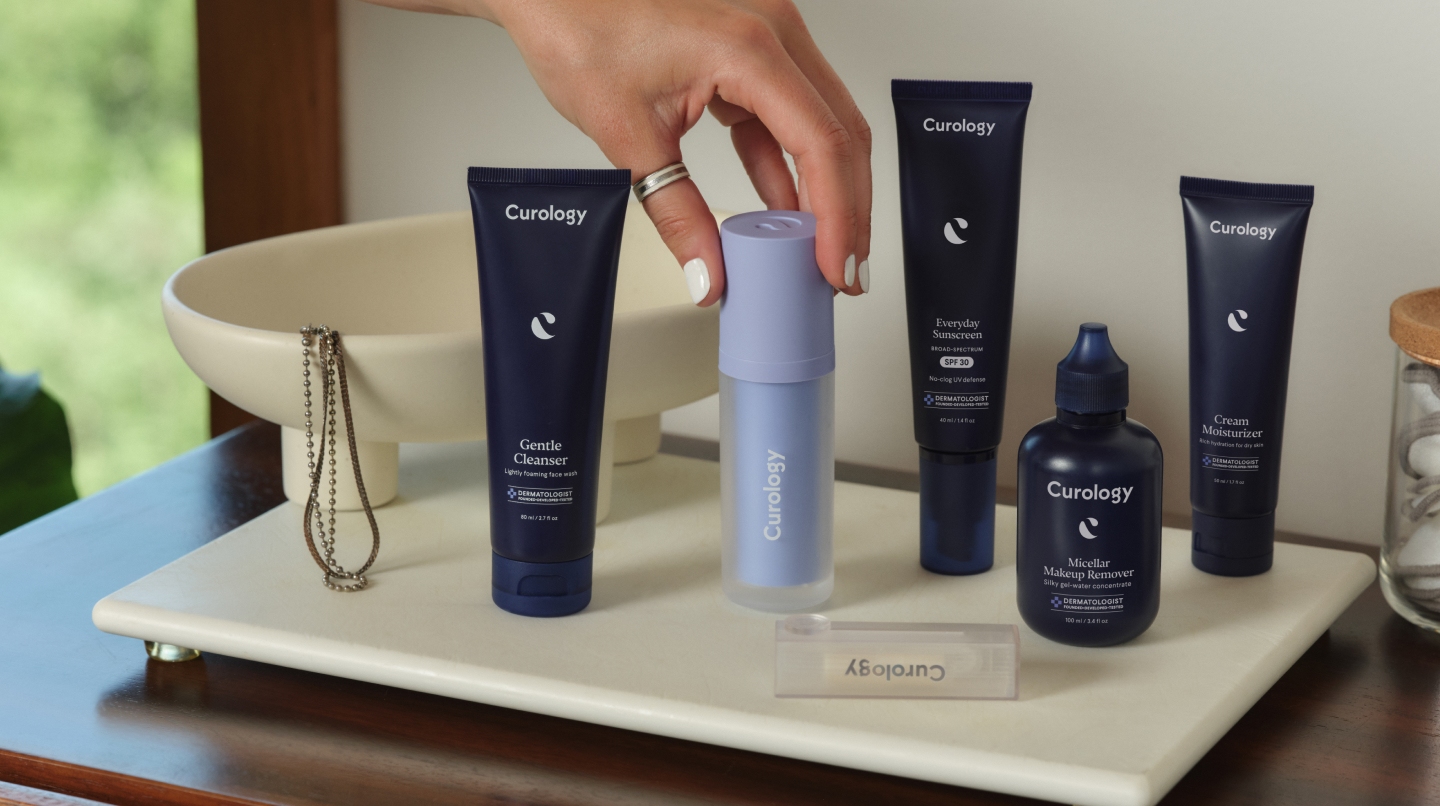How it works:
Share your skin goals and snap selfies
Your dermatology provider prescribes your formula
Apply nightly for happy, healthy skin
How it works:
How it works:
Share your skin goals and snap selfies
Your dermatology provider prescribes your formula
Apply nightly for happy, healthy skin
How it works:
Ask the experts: What’s the best facial for acne?
The right facial should benefit your skin, in addition to helping you feel relaxed.



Acne is a common skin condition that can be challenging to treat. Among the various skincare products and treatments available, facials are beloved for having blemish-fighting effects with relaxation as an added bonus. But what’s the best facial for acne?
Our experts will break down the basics of facials: how they work, the different types, and their potential benefits and side effects for acne-prone skin.
What is a facial?
A typical facial may include makeup removal, skin cleansing, exfoliation (mechanical, chemical, or enzymatic), steaming, extraction of blackheads and whiteheads, facial massage, a mask, moisturizer, and sunscreen. Although there’s little medical evidence to support the benefits of facials for skin structure and health, there’s no denying their relaxing and rejuvenating effects.
Are facials good for acne?
We love facials to boost overall well-being, but here’s the thing: They may not always be the best choice for acne-prone skin.
Everyone’s skin is different, so what works for one person might not work for the next. According to our experts, some facials may help reduce pimples, while others may make them worse. It all depends on the type of facial and the severity of your breakouts.
Skincare professionals may offer facials, or you may also choose to do them at home. With so many different types of facials, the results vary. If you’re unsure, speak to a dermatologist, dermatology provider, or skincare expert to determine the best options for your unique skin.
Understanding the different types of facials
The broad selection of facials can be overwhelming to consider. Our experts stress that when debating what type of facial to choose, you should keep your specific skin concerns in mind. Here are a few popular varieties to consider:
Classic facial
This standard treatment typically includes cleansing, exfoliating, and moisturizing, with the goal of improving the overall appearance of the skin. It may also include extractions, steaming, facial massage, and a mask.
Decongesting facial
This is a popular facial for hormonal acne and other blemishes. The decongesting facial is specifically designed to target clogged pores. It may include a deep cleansing treatment and extractions to help remove comedones. There’s no substantial research to prove its impact on acne.
LED facial
Lights and lasers¹ provide an increasingly popular acne treatment that’s generally safe and effective with minimal complications when used appropriately. ² LED facials use light-emitting diodes (LEDs) to target specific skin concerns, such as breakouts and redness. Research shows that blue light may help kill acne-causing bacteria and improve inflammatory acne lesions,³ while red light may help improve inflammation.⁴ In addition to professional models, LED devices are available for home use. That said, there currently aren’t large studies demonstrating that these at-home devices are more effective than other treatments, so we do not routinely recommend them at this time.
Microdermabrasion
Microdermabrasion is a potential physical treatment for acne.⁵ It uses a pressurized stream of crystals to exfoliate and remove dead skin cells. At-home devices are generally less powerful than those used by aestheticians or in medical offices. Microdermabrasion may improve skin texture, signs of aging, and acne scars,⁶ but our experts caution against using this type of facial on inflamed acne.
Hydra facial
The hydra facial uses a device to exfoliate the skin alongside cleansing and hydrating serums. It may include a light peel with glycolic and salicylic acids and extractions using a vortex suction tip. Hydrating facials are refreshing and soothing, and research shows HydraFacial Clarifying Treatments improve overall skin appearance in patients with active acne.⁷
Microneedling
If you’re interested in facials for acne scars, consider microneedling. This safe, effective, and minimally invasive treatment⁸ creates minor punctures in the skin to prompt a healing response, which may increase collagen and elastin production. Microneedling has been used to improve depressed acne scars and the appearance of the signs of aging.⁹ A study showed that treating atrophic acne scars with microneedling led to a 51-60% improvement in scar appearance.¹⁰ You’ll typically need to undergo multiple treatments to achieve results.
Vampire facial
Popular on social media, a vampire facial (aka a plasma or PRP facial) combines microneedling with platelet-rich plasma (PRP) to potentially stimulate collagen production.¹¹ Although it hasn’t been shown to help with acne, this facial may help reduce signs of aging and acne scars, plump sagging skin, and boost overall complexion.¹²
Potential benefits of facials for acne-prone skin
Facials are rejuvenating and pampering, and some may also improve acne-prone skin. Potential benefits include the following:
Cleansing: Facials may help remove impurities, such as excess oil and dirt.
Improving dark spots: Some facials may help improve the appearance of dark spots caused by past breakouts.
Reducing inflammation: Certain facials may reduce skin inflammation.
Relaxation: It’s not a direct benefit for acne-prone skin, but many find facials relaxing and pampering.
Remember, not all facials will provide these benefits, so do your research and choose a treatment tailored to your needs.
Potential side effects of facials
Facials may improve your skin's appearance, but it’s essential to keep potential side effects in mind, especially for acne-prone skin. Here are a few possible side effects of facials:
Irritation: Some facials may irritate the skin, especially if they include ingredients or treatments that you're sensitive to.
Worsening acne: The wrong type of facial may make acne worse.
Photosensitivity: Some facials, particularly those that include chemical exfoliation using AHAs, may make the skin more sensitive to sunlight.¹³ We recommend applying sunscreen with SPF 30 after a facial (and every day!).
Allergic reaction: The ingredients used in a facial may cause an allergic reaction.
Infection: If the equipment used during a facial is not properly sterilized, there is a risk of infection.
Curology can help treat acne and signs of aging
Founded by dermatologists in 2014, Curology is on a mission to provide accessible, full-service skincare to all. We help treat acne, hyperpigmentation, rosacea, and the signs of aging.
Get your personalized skincare routine with Curology
Get your personalized skincare routine with Curology


Although facials are a luxurious addition to your skincare lineup, we recommend a simple and consistent routine with effective ingredients to target your skin concerns. Our licensed dermatology providers prescribe personalized formulas with proven-effective ingredients, such as tretinoin, azelaic acid, and niacinamide.
Curology patients are paired with a licensed in-house dermatology provider. After you answer a few questions and snap some selfies, they’ll prescribe a custom formula with active ingredients to help you achieve your specific skin goals.* Our professionals can also answer any skin-related questions you may have.
FAQs
We love facials to boost overall well-being, but here’s the thing: They may not always be the best choice for acne-prone skin. Everyone’s skin is different, so what works for one person might not work for the next. According to our experts, some facials may help reduce pimples, while others may make them worse. It all depends on the type of facial and the severity of your breakouts.
Facials are rejuvenating and pampering, and some may also improve acne-prone skin. Potential benefits include the following:
Cleansing: Facials may help remove impurities, such as excess oil and dirt.
Improving dark spots: Some facials may help improve the appearance of dark spots caused by past breakouts.
Reducing inflammation: Certain facials may reduce skin inflammation.
Relaxation: It’s not a direct benefit for acne-prone skin, but many find facials relaxing and pampering.
Facials may improve your skin's appearance, but it’s essential to keep potential side effects in mind, especially for acne-prone skin. Here are a few possible side effects of facials:
Irritation: Some facials may irritate the skin, especially if they include ingredients or treatments that you're sensitive to.
Worsening acne: The wrong type of facial may make acne worse.
Photosensitivity: Some facials, particularly those that include chemical exfoliation using AHAs, may make the skin more sensitive to sunlight. We recommend applying sunscreen with SPF 30 after a facial (and every day!).
Allergic reaction: The ingredients used in a facial may cause an allergic reaction.
Infection: If the equipment used during a facial is not properly sterilized, there is a risk of infection.
P.S. We did the homework so you don’t have to:
Treatment of moderate-to-severe facial acne vulgaris with the use of a solid-state fractional 589/1,319-nm laser. Journal of the American Academy of Dermatology. (2018).
Pei, S. et al. Light-based therapies in acne treatment. Indian Dermatology Online Journal. (2015).
Diogo MLG, et al. Effect of Blue Light on Acne Vulgaris: A Systematic Review. Sensors (Basel). (2021).
Tolerance of a low-level blue and red light therapy acne mask in acne patients with sensitive skin. Journal of the American Academy of Dermatology. (2018).
Kraft J, Freiman A. Management of acne. CMAJ. (2011).
Shah M, Crane JS. Microdermabrasion. StatPearls. (2022).
Storgard R, et al. Efficacy and Tolerability of HydraFacial Clarifying Treatment Series in the Treatment of Active Acne Vulgaris. J Clin Aesthet Dermatol. (2022).
Singh A, Yadav S. Microneedling: Advances and widening horizons. Indian Dermatol Online J. (2016).
Litchman, G., et al. Microneedling. StatPearls. (2022).
Iriarte C, et al. Review of applications of microneedling in dermatology. Clin Cosmet Investig Dermatol. (2017).
The Efficacy of Platelet-Rich Plasma (PRP) in Dermatology. Journal of the American Academy of Dermatology. (2019).
Is platelet-rich plasma the secret to younger-looking skin? American Academy of Dermatology Association.
Tang SC, Yang JH. Dual Effects of Alpha-Hydroxy Acids on the Skin. Molecules. (2018).
Meredith Hartle is a board-certified Family Medicine physician at Curology. She earned her medical degree at Kirksville College of Osteopathic Medicine in Kirksville, MO.
* Subject to consultation. Subscription is required. Results may vary.

Curology Team

Meredith Hartle, DO
Related Articles
Why am I still breaking out with a good skincare routine? Experts explainDoes dermaplaning cause acne? Experts explainThe 6 best chemical exfoliators for glowing skinNavigating the world of oil-free moisturizers: Our top 4 picksPeptides for skin: Unpacking their skincare influencePopular Articles
Ask Curology: Is my cold breaking me out?Slugging: The dermatologist-approved skincare hack going viral on TikTokTretinoin vs retinol: What’s the difference?How to create a self-care routine that actually sticksYour 2023 skincare horoscopeTry prescription skincare
Get routine essentials

Good skin days ahead
- Breakouts
- Redness
- Fine lines
- Dark spots
- Hair thinning